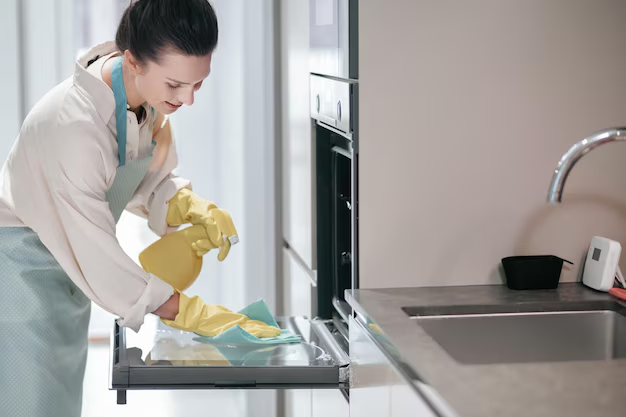Can You Safely Use Clorox Wipes Inside Your Refrigerator? Let's Find Out!
Picture this: it’s a Sunday evening, you’re gearing up for the week ahead, and it hits you — your refrigerator needs a clean. It’s a regular routine for most, yet the products and methods chosen can sometimes spark uncertainty. Have you ever found yourself asking, “Can I use Clorox wipes inside my refrigerator?” It’s a common query, and one that deserves a clear, thorough response. In this article, we'll explore the ins and outs of cleaning your refrigerator with Clorox wipes, while diving into related subtopics to help you maintain an immaculate and hygienic kitchen.
The Basics: Clorox Wipes and Kitchen Cleaning
Clorox Disinfecting Wipes are a popular household item, known for their ease in tackling germs and grime across various surfaces. But when it comes to the enclosed, food-centric environment of a refrigerator, extra precautions can ensure safety and effectiveness.
Understanding Clorox Wipes
Clorox wipes are convenient for quick disinfection tasks. They are pre-moistened with a cleaning solution designed to kill bacteria and viruses, making them suitable for high-touch surfaces like doorknobs, countertops, and yes, certain parts of your refrigerator.
Safety First
Before diving into cleaning:
- Read the Label: The manufacturer's instructions will confirm safe usage.
- Proper Ventilation: Ensure your kitchen is well-ventilated to minimize inhalation of cleaning product fumes.
- Food Safety: Make sure to remove all food items from the refrigerator before cleaning to prevent contamination.
Cleaning Your Refrigerator with Clorox Wipes
Now that you understand what Clorox wipes are, the real question is: can Clorox wipes be used inside your fridge? The answer is nuanced.
Where Can You Use Clorox Wipes?
- Exterior Surfaces: The handles and doors are ideal spots for Clorox wipes to work their magic. These areas frequently collect germs from regular handling.
- Removable Parts: Shelves and drawers that can be taken out of the fridge can also be wiped down with Clorox wipes. Just ensure they're thoroughly rinsed with water afterward to prevent residue.
Where Should You Avoid Them?
- Direct on Food and Ice Maker: Avoid using Clorox wipes directly on areas that come into contact with food or ice.
- Sensitive Surfaces: Some interior surfaces might be sensitive to harsh chemicals; always test a small, inconspicuous area first.
Best Practices
- Pre-Cleaning Step: Remove crumbs and debris with a dry cloth before using wipes.
- Rinse After Cleaning: Always rinse any surface that may come into direct contact with food.
- Thorough Drying: Ensure every cleaned surface is dry before restocking it with food items.
Keeping It Eco-Friendly: Alternative Cleaning Solutions
If you're looking for natural, eco-friendly alternatives, several options can work well for both cleaning effectiveness and environmental impact.
Homemade Solutions
- Vinegar and Water: A mix of white vinegar and water can be an excellent multi-use cleaner. It’s gentle yet effective at deodorizing and cleaning.
- Baking Soda: A paste of baking soda and water works well for tackling tougher stains and smells.
Benefits of Natural Cleaners
- Less Chemical Residue: Fewer chemicals are always a healthy choice for your kitchen.
- Cost-Effective: Home remedies are often budget-friendly compared to commercial cleaners.
Pro Tips for Refrigerator Maintenance
An organized and clean refrigerator isn't just about aesthetics; it improves longevity and efficiency.
Regular Organization
- Weekly Check-ins: Organize your fridge weekly to catch spoiled items early.
- Use Clear Bins: These can help in categorizing and easily spotting what you have.
Optimal Temperature
- Monitor with a Thermometer: Keep the fridge thermometer handy to ensure it remains within the recommended temperature range for food safety (below 40°F or around 4°C).
Freshness Matters
- Activated Charcoal or Baking Soda: Keeping an open container in the fridge absorbs any residual odors over time.
Summary: Key Takeaways for Fridge Cleaning 📝
Here's a quick recap of the critical points covered in this guide:
- Clorox Wipes Use: Safe for exterior surfaces and removable parts but avoid direct contact with food or sensitive interior surfaces.
- Pre-Safety Measures: Always read labels and remove food items before cleaning.
- Eco-Friendly Alternatives: Consider vinegar or baking soda for a more natural cleaning approach.
- Maintenance Tips: Regularly organize, monitor fridge temperatures, and use odor absorbers for lasting freshness.
Empower Your Cleaning Routine
The journey to a pristine kitchen is filled with choices — from the cleaning products you use to the habits you form. Clorox wipes can undoubtedly have a role in maintaining a sparkling refrigerator, provided their use is informed and mindful. By incorporating natural cleaning alternatives and adopting smart maintenance habits, you'll not only preserve the longevity of your appliance but contribute to a greener, cleaner home.
Remember, a clean refrigerator is more than just pleasing to the eye; it’s a cornerstone of a healthy lifestyle, ensuring food safety and efficiency. Now, armed with these insights, you're ready to tackle your refrigerator cleaning with confidence and care.
